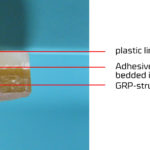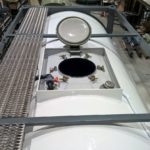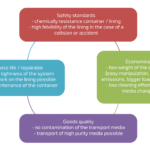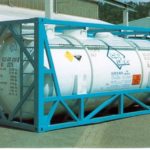Georgetown, South Carolina – About 8 million commercial vehicles form the backbone of the U.S. logistics network. On occasion, the transported cargo includes sulfuric, hydrochloric, nitric acid, as well as sodium hydroxide. These “aggressive media” are classified as dangerous goods, which are subject to higher safety standards. To meet those safety standards, logistics partners seek specialized containers that guarantee high cost-effectiveness and product quality as well as a long service life.
Currently, most tank containers are made of stainless steel. Depending on the specific application, a thermoplastic lining (e.g., PE 100, ECTFE, FEP, PVDF-Flex and PFA) will be added to the tank to protect the steel from corrosion (Figure 1). While the thermoplastic-lined containers show excellent chemical resistance, the structure of the tank is still made of steel. A drawback of using a steel container is its high weight, which reduces the maximum loading capacity of the container as regulated by law. For this reason, logistic partners are interested in new solutions that offer the same chemical resistance at improved weight ratios.
Oy Fluorotech Ltd and admor Composites OY, a Finnish company, are revolutionizing the transportation industry with a lined fiberglass-reinforced plastic (FRP) container. The innovative container offers a weight reduction of approximately 3,500 lb. by replacing the standard steel container with an FRP container. Thus, this lighter more efficient tank is capable of transporting a larger volume of chemicals when compared with its steel alternative. To maintain the required chemical resistance of the FRP container for the various media transported, admor Composites OY uses PE 100, ECTFE, FEP, and PFA fabric-backed semi-finished products produced by AGRU. These materials show excellent resistance to a variety of media, enabling a long-lasting product solution. Plastic lined containers also carry the added benefit of having surfaces that are easy to clean, which can also reduce the risk of cross contamination. Furthermore, thermoplastic linings allow the transport of high-purity media.
The new container is made by a combination of FRP and thermoplastic lining material. By using this combination, the FRP handles the structural requirements (static loads) of the container. Due to the usage of a fabric backing system the thermoplastic lining material is fixed on the inner surface of the container, ensuring a perfect bonding (Figure 3).
How an FRP dual-laminate container is made
First, the fabric-backed sheet is molded into the final shape by forming and welding. The fabric backing is located on the outside of the thermoplastic tank surface. Due to the low strength of the thin lining material, the tank shell is supported by a formwork from the inside. In the next step, FRP is applied onto the fabric backing side using the filament winding technology or hand lamination process. Next, the container is fixed to the ISO frame. In a final step, the equipment (pumping station, safety valves, etc.) is installed and the container becomes fully operational (Figure 4 and Figure 5).
Summary of advantages for using a PE 100-, ECTFE-, FEP, or PFA-lined FRP ISO container:
- By choosing a FRP dual-laminate structure, the total weight of the container is significantly lower when compared with a steel container (about 3,500 lb.).
- Due to the lower weight of the container, a larger volume of chemicals can be transported.
- The container’s plastic lining (e.g., PE, ECTFE, or PFA) ensures long-term chemical resistance.
- Thermoplastic surfaces are very easy to clean when compared with steel surfaces. In situations calling for a change of medium, both the cleaning time and the required amount of cleaning media (water, aids) can be significantly reduced. In addition, the risk of cross-contamination decreases.
Figures
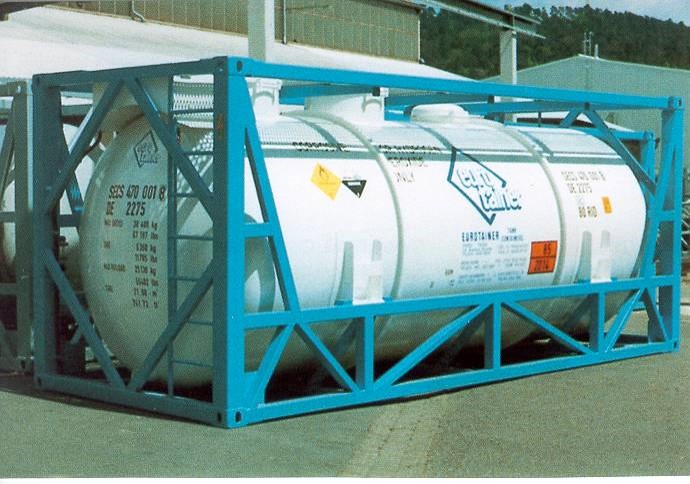


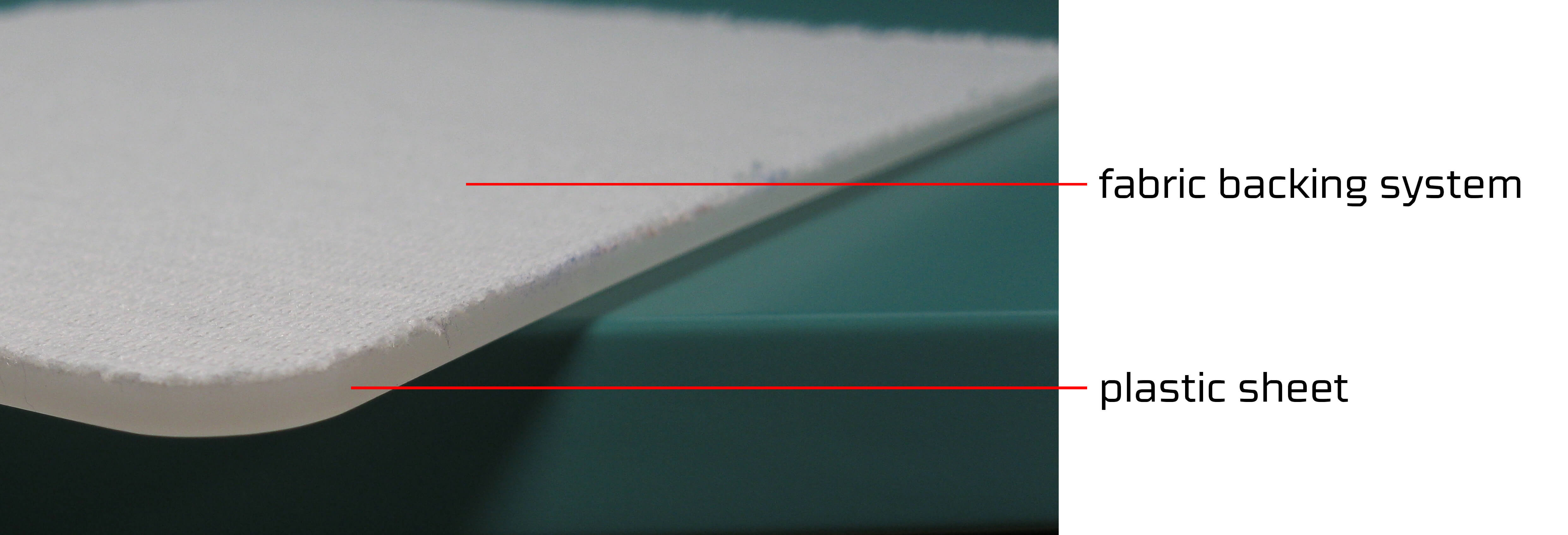
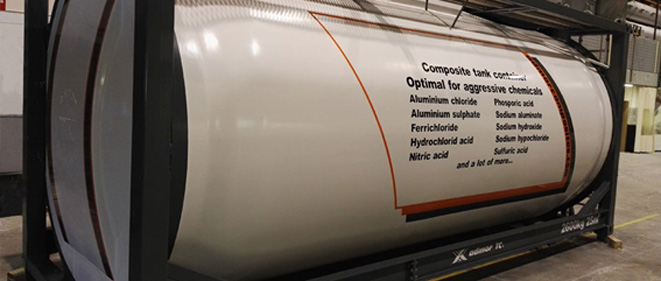

Overview
- Lined Fiberglass-reinforced Plastic (FRP) Container
- PE 100, ECTFE, FEP, PVDF-Flex and PFA
Download Resources
Need Help Determining Which Product is Right For Your Application?
Interested in learning more about how one of our products can make a difference in your next project? Please reach out to us with your questions and one of our sales or technical staff will be happy to assist you.
We can help you determine your exact product or application-related needs. And because our products meet, and often exceed, industry standards you can rest assured knowing that you are getting the best solutions in the business.
